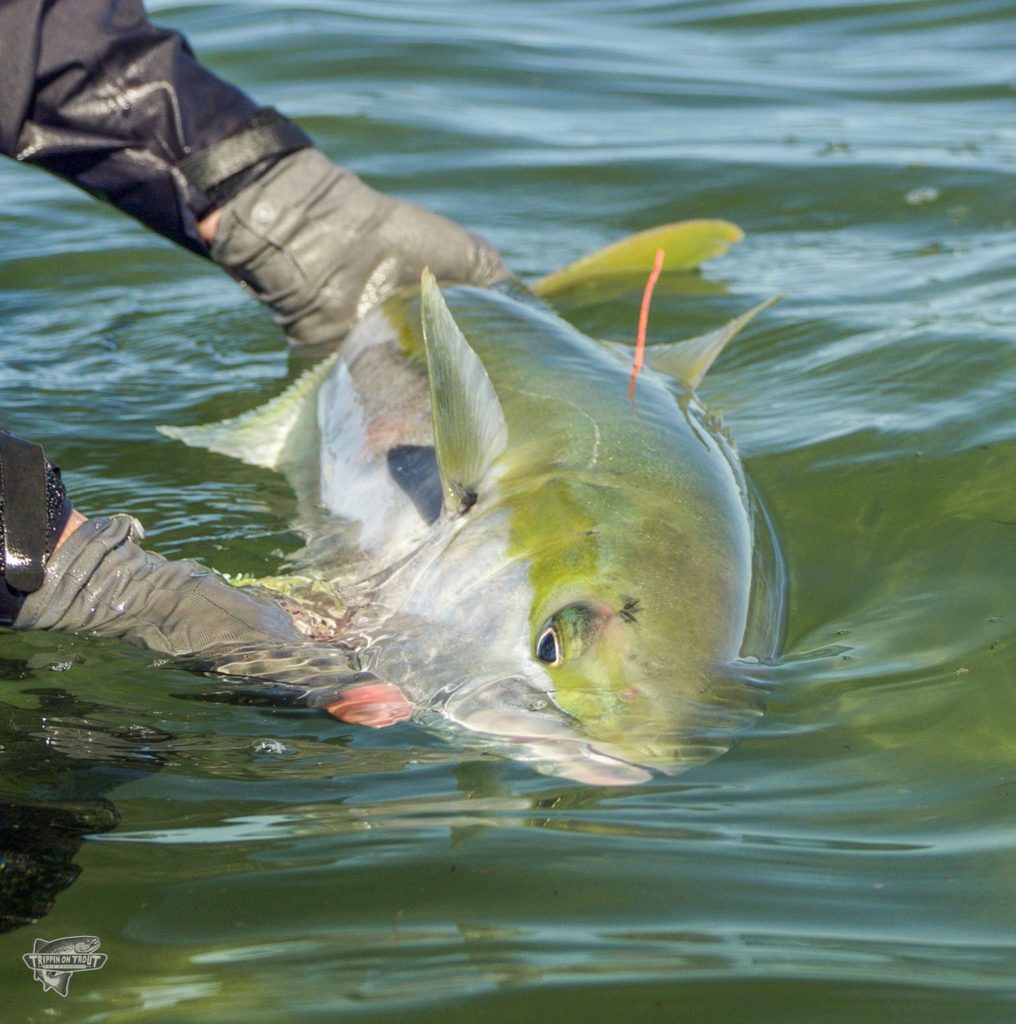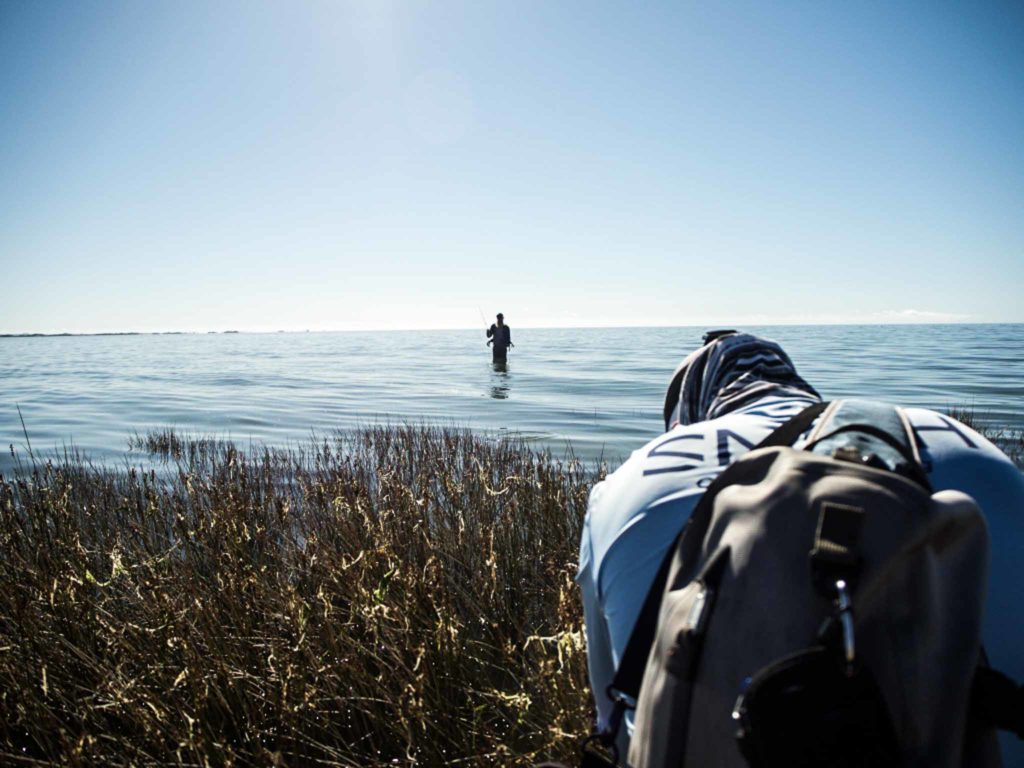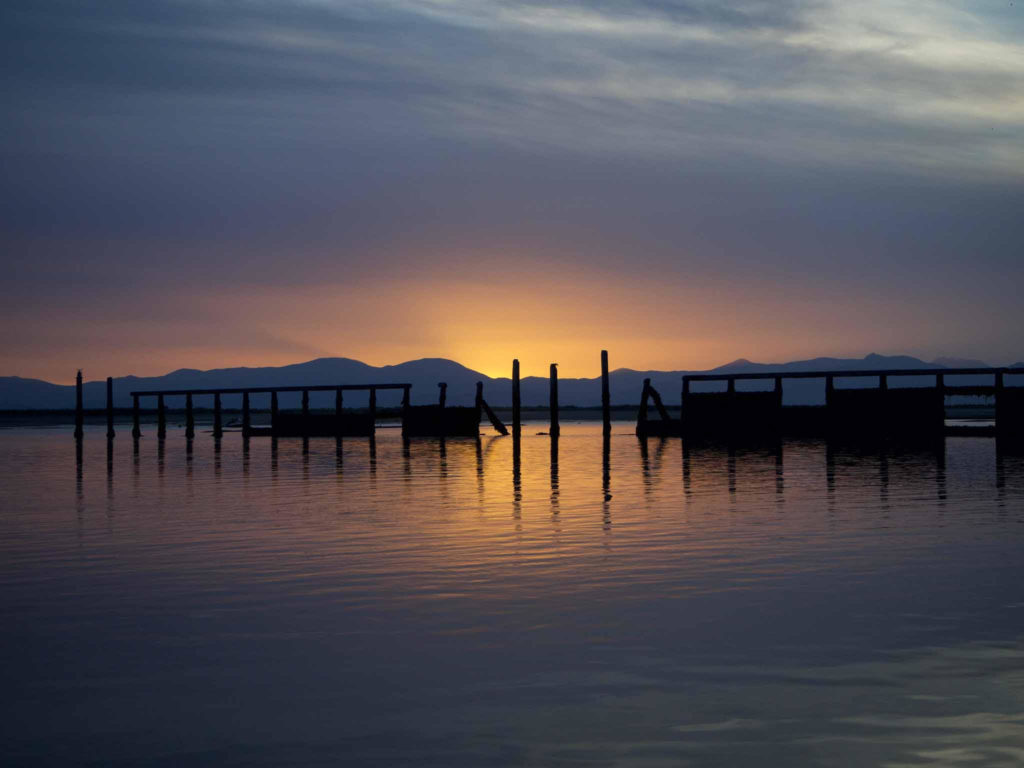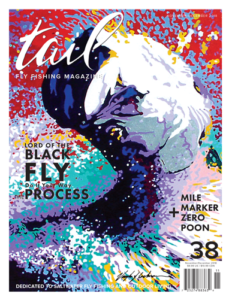By Jonathan ‘Redbeard’ Jones // Alex Waller
(originally published in Tail #30 – July/August 2017)
Chasing yellowtail kingfish is as challenging as it gets. They are apex predators, and at a special time of year they roam the flats of New Zealand tearing ferociously through baitfish schools like nothing you’ve ever seen, offering ample opportunities to catch them on a fly rod.
For years, I had been talking to Alex Waller about heading to New Zealand to experience the mayhem and see firsthand what Alex and his crew had going on with their tag-and-release kingfish program. I talked my good friend Ben into tagging along and we packed our gear and jumped on the big metal bird for a short three hour flight.
After landing and packing the car full of gear, we hit the road for the next six hours. The drive was remarkable: the New Zealand countryside is breathtaking, with huge rolling mountains and crystal clear rivers. We felt like we had stepped off the plane and straight into Jurassic Park, thankfully minus the dinosaurs.
Once we had crossed the mountain range and had the flats in our sights in the distance, we were like fat kids in a cake shop. We made it to the cabin just as dusk approached, and it was time to go through the usual ritual, pulling all the gear out and spending the night rigging up for the week’s adventures. After catching up over a few Sailor Jerrys and getting everything ready to go, it was lights out. The next morning couldn’t come fast enough and we were all up after less than five hours of sleep. After a few cups of strong coffee and some cigarettes, we jumped in Alex’s whip and headed to the flats as light came over the long sandy straits of Golden Bay, the anticipation building with the rising sun.
We were armed with 9 and 10-weight rods loaded with floating lines, and Alex was nice enough to bring us to one of his favorite spots first thing in the morning. As the tide started to roll out, we made our way into the water and onto the flat, looking for stingrays flapping their broad wings over the sand, leaving muddy trails behind them. The kingfish are known to follow the stingrays as they feed, because the stingrays stir up extra baitfish and crabs, providing a potentially easy meal. Upon spotting a ray, we had to move quickly across the flat and make as long of a cast as possible. Sometimes with the wind you have to make the shot really fast; once the rays see you, they are off like a light and you can say goodbye to any kingfish behind them. When it all comes together and you see three or four green backs swimming aggressively towards you in a meter of water while hunting down your fly, you know it’s going to be fish on. The fastest fish hits the fly hard and fast, and the next 25 to 40 minutes are pure mayhem.

Upon getting a fish to hand, it was time to tag and release it. Alex and his friend Paul Mills from Revolution Fly Fishing New Zealand established a great tagging program, wanting more information about where these fish went, what they were doing once they left the flats, and how far they were traveling before being recaptured (or whether they stayed in the same general location). This was a truly valuable part of our experience on the trip. With over 150 kingfish tagged and released (at the time of writing) and 10 fish recaptured and released to fight another day, the project is a great way to learn more about these bruisers and assist in conservation efforts.
After spending a few days roaming the flats in search of these predators, it was clear that the guys had stumbled across something that would keep anglers coming back year after year. The fishing is amazing, but the backdrop that surrounds it–from green mountain ranges to the vast flats–makes this place a small piece of heaven, and provides an experience that will stick with you. After a few crazy encounters with these “hoods,” it was clear to me how much angling ability and fitness plays into it. Running through waist deep water just to get close enough to the rays and get your shot at a fish is very physically challenging, but provides for some insane fishing moments that won’t be forgotten.





